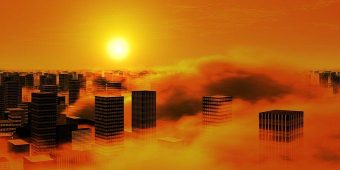
As of 2016, New Delhi was the 11th most polluted city in the world, which was a positive development compared to 2014, when it had the dubious honor of being number one, according to World Health Organization (WHO) data reported by The Huffington Post.
Now, research by the Harvard John A. Paulson School of Engineering and Applied Sciences (SEAS) published Friday found that a dangerous new tradition can double air pollution levels in the entire state of Delhi on some fall days.
Since around 1980, farmers in the agricultural region of northwest India have switched from traditional to mechanical agricultural techniques, which leave crop residue behind after harvesting. Farmers have taken to burning the residue in order to clear their fields after the fall harvest, in October and November, a practice that sends clouds of black carbon and particulate matter downwind to the larger National Capital Region of Delhi, which is home to more than 46 million people.
The practice is technically illegal, but, as the Harvard press release announcing the results pointed out, the law isn’t often enforced, partly because it was not known to what degree the crop-fire smoke was actually contributing to Delhi’s air problems.
The results, published in Environmental Research Letters, have changed that. “On certain days during peak fire season, air pollution in Delhi is about 20 times higher than the threshold for safe air as defined by the World Health Organization,” SEAS graduate student and study author Daniel H. Cusworth said in the release.
In order to determine the link between fires and air pollution, researchers used satellite images of fires obtained from NASA for October and November of 2012 to 2016. They then plugged that data into models that tracked how smoke particles would travel based on geography, physics and wind patterns. The particularly stagnant air following monsoon season makes the autumn the absolute worst time to burn crops, since the smoke doesn’t disperse into the atmosphere as it otherwise would.
The results confirm the fires as a major contributor to an already serious public health issue. According to the introduction section of the study, deteriorating air quality in Delhi led to a 60 percent increase in mortality between 2000 and 2010. People in the region suffer from air-pollution-related illnesses at a rate 12 times higher than people in India overall.
The study’s findings give officials another tool to help combat the problem. “This information can provide policymakers with a quantitative sense of the consequences of current agricultural burning practices in regions upwind of the city in order to inform decision-making,” the study concluded.
Source: ecowatch.com

